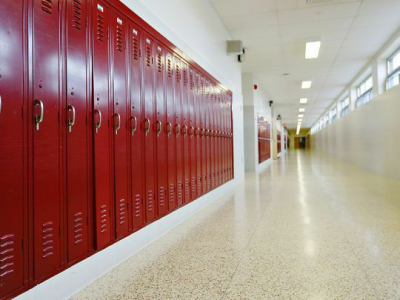Widgetized Section
Go to Admin » Appearance » Widgets » and move Gabfire Widget: Social into that MastheadOverlay zone
Do School Districts Close the Right Schools?
The views expressed are those of the author and do not necessarily reflect the views of ASPA as an organization.
By Rachel Weber
February 13, 2019

Across the United States, school districts are confronting an aging and deteriorated stock of school facilities at a time when revenues and other options for financing renovations are limited. Administrators must decide whether to retrofit older schools, close these schools, consolidate students in other older schools, or build new facilities. Not choosing one of these options means continued deferred maintenance, possibly to a point where the buildings are no longer safe for students.
New York City, Washington D.C., Philadelphia, and Boston have closed scores of schools since 2000. However, it was Chicago’s decision to close 49 schools in 2013 that drew national attention as it was the largest mass school closure in recent history… During and after the decision, the city erupted in protest with the Chicago Teachers Union leading a charge of angry parents, students and teachers.
There has been ongoing debate about whether Mayor Rahm Emanuel’s administration closed the right schools when it said it was closing underutilized buildings and shifting the cost savings to schools with higher enrollments.
Parents and advocates disagreed. Noting that closures disproportionately impacted black neighborhoods, they charged that the decisions reflected a racially motivated policy designed to marginalize and shift the cost burden to people of color. Others noted that strategically closing schools in select neighborhoods encouraged gentrification and the construction of charter schools there.
My colleagues Stephanie Farmer and Mary Donoghue and I used logit models to examine not only the 2013 round of closures that occurred under Mayor Rahm Emanuel, but also an earlier wave of closures that took place during Mayor Richard M. Daley’s administration.
Each wave was driven by different factors, indicating that the distinct priorities of the two political administrations mattered. In keeping with the official justification for school actions under Mayor Daley, the share of students not meeting target scores on standardized tests predicted which schools were disciplined through closure and reconstitution. But, as critics argued, proximity to a charter school also increased a school’s chances of closure. This is possibly because charter schools creamed enrollments from nearby public schools. Proximity to the Central Business District increased a school’s chance of closure. This could reflect Mayor Daley’s strategy to transform neighborhoods on the perimeter of the Loop in hopes of both attracting more affluent households to these growing areas and keeping them from moving to the suburbs.
The most troubling result was that, even controlling for the share of low-income students and changes in enrollments and test scores, the share of black students in a school was a positive and significant predictor of closure. If a school increased its share of black students by even one percent, its chances of closure increased exponentially. Whether administrators explicitly considered the race of a school’s students in decisions to close schools, or whether variables measuring black students in our models were proxies for other unmeasured characteristics, the cumulative effect of these technical decisions interacting with a racially differentiated education environment resulted in black students and their families disproportionately bearing the burden of these administrative disruptions. In contrast, Latinx students were largely insulated from closures, possibly due to the fact that majority-Latinx schools were better utilized, or the fact that Latinx communities were targeted less by school reformers and charter school operators.
During the second wave of closures and turnarounds under Mayor Rahm Emanuel, poorly utilized schools were more likely to be closed. Even a small decrease in the utilization rate would have increased the probability of closure, in keeping with the official justification for closures during this administration. Moreover, the farther away a school was from a newly constructed school, the greater its chances of closure. This makes sense as new schools tended to be built for growing ranks of Latinx students and selected enrollment schools were constructed in higher-income neighborhoods.
Our findings shed light on the multiple conflicting interests that school districts must balance to serve the needs of school-age populations and taxpayers. They also reveal some distance between the official rationale for closures and the realities of capital budgeting under austerity. School districts across the country are engaging in a constrained form of facilities planning with little financial assistance from state or federal governments. It is tempting to rely on seemingly objective criteria like under-utilization in making tough decisions. However, it is also important to recognize the historical factors that may have led to such conditions, such as competition with charter schools and other planning and real estate behavior that caused households to leave poor neighborhoods.
Even in the absence of overt bias, the organizational rules and technical-rational criteria used for facilities planning can create service delivery inequalities that impose hardships on vulnerable populations. At a minimum, administrators should possess accurate and sufficiently granular information to make life-altering decisions like closing neighborhood schools.
Author: Rachel Weber is a professor in the Urban Planning and Policy Department of the University of Illinois in Chicago and is also a faculty adviser of the Government Finance Research Center at the same institution.


Jason Juffras
February 18, 2019 at 6:47 am
Very interesting and well-written.